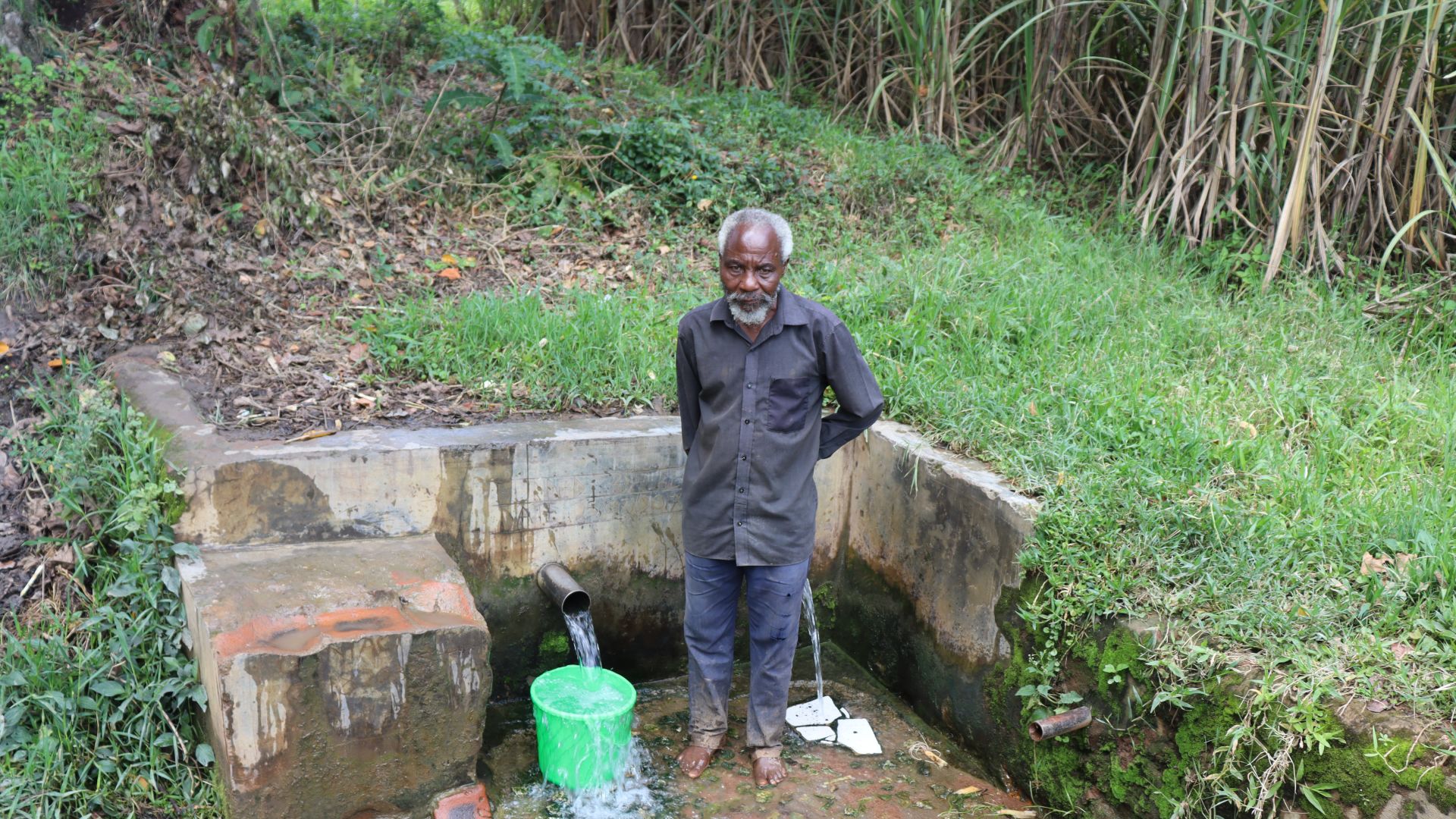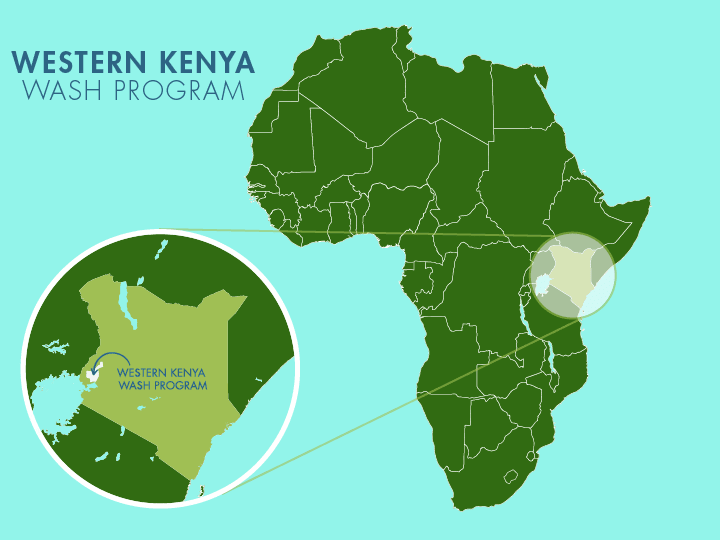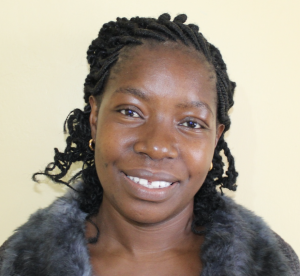Anxiety runs rampant alongside typhoid in the Timbito Community for its 320 residents. Their main water source, the David Indeche Spring, is unprotected, overcrowded, and provides water that is unsafe for consumption.

Children push for their turn to fill their jerrycans.
Field Officer Christine Masinde painted a harrowing picture of life in the Timbito Community. "Some of the health consequences reported from drinking the water are typhoid and diarrhea. These illnesses range from mild to severe, depending on the level of contamination in the water and the immunity of a person."
Not only does the water cause illness, but it also creates tension in the community.

Hauling water out of the muddy spring.
"Some of the negative consequences are quarrels among waterpoint users, especially when there is overcrowding. This has brought about a lot of conflict because everyone wants to be the one to fetch, not wanting to give room to the other. In the end, it causes a lot of tension and strain in relationships among the community members," she added.
For families like David's, these consequences are not abstract—they are a painful reality.

David Indeche.
David Indeche is sixty-eight. He is a local farmer and family man. He experiences the water crisis on a personal level daily. It's a challenge for him, but what's worse is watching his family suffer through it.
"Recently, my grandchild fell ill. She had stomach upset, which ended up in diarrhea. This was such a traumatic experience, considering it happened at night and we do not live near any health facility. It was sad to see her in so much pain. We had to look for home remedies as we prayed for morning to come, to take her to the hospital. She was diagnosed with typhoid! I had to use my meager income on treatment and buy medicine instead of spending it on basic needs," David lamented.
Due to the high cost of care, many have to try home remedies first to save any income they can.
David shared, "Most of the time, we use a mixture of warm water mixed with [a] little salt and sugar, or rice water in the case of diarrhea. In [the] worst cases, we take [people] to [the] hospital and have to buy the prescriptions given to us. Sometimes the medicines are very costly and cause a dent in our pockets."
Illness doesn't just affect their physical health. It also deprives them of the opportunity to work or attend school, making their futures even more uncertain.

David tends to his farm.
"As a result of being sick, if it is a child, then that means the child will have to miss school in order to be treated and recover before resuming school. For an adult, it means one would not be able to go out for work, that means no money for the day and delayed farm activities, which in turn affects the yield of the farm produce," he explained.
"If there was another option, we would all consider the option. But now, with no other options, we are forced to drink this very water that harms us, which is really sad."
David is not only experiencing health scares. The long lines at the spring are just as detrimental to his livelihood.
He shared how long it can take to collect water. "It took at least four and a half hours. This was because of the overcrowding at the spring. It was during the dry season, and most people had come from far places to fetch water; this overcrowded the water point on a daily basis."
Getting to the water is just as tedious. "Accessing the waterpoint is not easy because of the nature of the terrain. It is uneven and slippery; as a result, falls are experienced daily. Children have to be supervised as they go to fetch water to minimize injuries. Snakes are also commonly found in the nearby bushes and farms. Water users have to be extra careful to avoid being bitten by those snakes," David shared.

Children navigate down to the spring.
Everyone has a livelihood to invest in or a class to attend, so the lines at the spring are often filled with tension and animosity. People are pushed to the brink, trying to ensure their family survives.
"It causes a lot of strain and tension between my neighbors and me. Sometimes, it reaches a point where we do not even talk to each other for days. This creates a tense and hostile atmosphere within the community that affects the overall unity and development of the community," David said.
"My grandchild was harassed by an adult at one time. She was verbally abused, and this hurt me very much, because she was in no position to defend herself," he added sadly.

David stands in the spring that brings him so much heartache.
But we have a plan to work towards hope with the Timbito Community. Protecting their spring will revitalize community unity, ensure health, and help David's family thrive.
"A new waterpoint means a shorter time at the waterpoint. One does not have to wake up so early or go there so late to get water, because it will take the shortest time possible to fetch water. We will be assured of accessing safe and clean water, and water-related and waterborne diseases will be eliminated completely," he exclaimed.
"I would engage myself in other activities around the home and on my farm that, in the long run, would help generate more income. This includes: taking care of the crops and attending to my livestock, [which] provides milk and farm manure. I sell surplus produce from the farm to take care of family financial risks," David declared.
For David, his grandchildren, and the entire Timbito Community, clean water will not only mean relief from disease—it will bring peace, dignity, and the chance to thrive.
Steps Toward a Solution
Our technical experts worked with the local community to identify the most effective solution to their water crisis. They decided to safeguard the existing flowing spring.
Spring Protection
Springs are natural water sources that originate from deep underground. As water travels through various layers of the earth, it undergoes a natural filtration process, making it cleaner and safer to drink. To protect these spring sources from contamination, we construct a waterproof cement structure around layers of clay, stone, and soil. This design channels the spring water through a discharge pipe, facilitating easier, faster, and cleaner water collection.
Chlorine Dispenser
As an extra measure towards water quality safety, uniquely engineered chlorine dispensers are installed at all of our spring protection projects so community members can treat their water with pre-measured doses of chlorine. The chlorine treats any possible contamination and stays active for two to three days, ensuring water stays safe to use even when stored at home. Chlorine delivery and maintenance of the dispensers are part of our ongoing community support.
Community Education & Ownership
Hygiene and sanitation training are integral to our water projects. Training is tailored to each community's specific needs and includes key topics such as proper water handling, improved hygiene practices, disease transmission prevention, and care of the new water point. Safe water and improved hygiene habits foster a healthier future for everyone in the community. Encouraged and supported by the guidance of our team, a water user committee representative of the community's diverse members assumes responsibility for maintaining the water point, often gathering fees to ensure its upkeep.

 Protected Spring
Protected Spring
 Rehabilitation Project
Rehabilitation Project


















